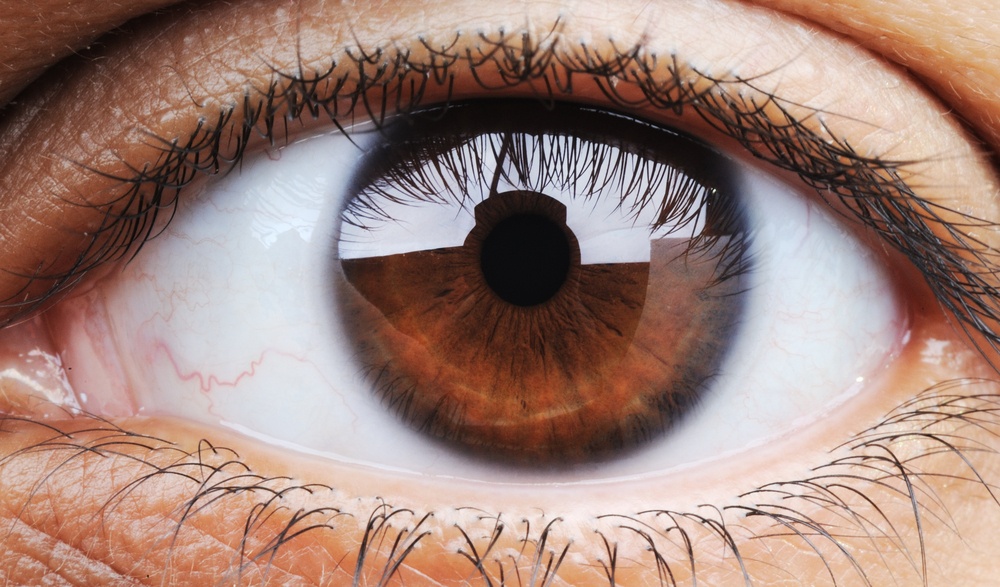
One in every 200 migraine patients experiences ocular or retinal migraines that can significantly affect their vision. These attacks are often preceded by aura, which typically affects both eyes. Patients might see spots, patterns or flashes of light before a headache develops, and symptoms range from light sensitivity to temporary vision loss. The worst ocular migraines can cause temporary blindness episode lasting several minutes, although the duration is usually less than an hour.
UNDERSTANDING OCULAR MIGRAINES
Ocular migraines are more likely to affect young women than other patients, and they occur most often in people who have a history of migraine with aura. These episodes can affect one or both eyes, and include symptoms such as:- Scotoma, a temporary blind spot that might appear to be a black or fuzzy area blocking vision in the affected eye.
- Scintillations, which patients describe as flashing or “zig-zag” lights in the eye. These can be in the center of your vision or off to one side, and might start out small and gradually expand in size over a few minutes to half an hour. They usually look like lines or halos, and appear to sparkle.
- Pain, which some patients experience while others don’t. This often develops only after the visual disturbance is over. The pain can be mild or severe, and can last from a few hours up to several days.
- Nausea, which can occasionally lead to vomiting.
- Increased light sensitivity.
Although we don’t know the exact cause of ocular migraines, doctors believe these vision disturbances are triggered by spasms or blockages of the tiny network of vessels supplying blood to the eyes. Recent studies of the effect of light on migraines have shown that using special lenses to reduce the amount of light entering the eye can help, because they filter out the wavelengths relating to migraine symptoms and activity.
Ocular migraine episodes differ from glaucoma or acute angle closure, although these can also elicit an intense headache pain accompanied by nausea, halos or flashes of light. The pain is usually felt in the center of your brow, however, while migraine pain is typically felt on one side of the head—usually the same side as the eye with visual impairment.
Patients can develop ocular migraine as a result of stress, fatigue, sinus, hypertension, dietary triggers, hormonal fluctuations, incorrect eyeglass prescriptions and tumors, and it’s possible to have both a regular migraine and an ocular migraine simultaneously.
INCREASED RISK FACTORS
Some patients have a higher risk of developing ocular migraines than others. Risk factors include a family history of migraine or ocular migraine, personal history of chronic headache, medical conditions such as epilepsy, lupus, hypertension or peripheral artery disease (PAD).
Smokers, people who use oral contraceptives, and those with high levels of stress or who take part in strenuous physical activity also have an increased likelihood of experiencing ocular migraines.
GETTING A DIAGNOSIS
Patients who get frequent migraines with ocular symptoms should consult with a specialist. Obtaining a clear diagnosis of ocular migraine is difficult for many patients, partly because doctors find it challenging to identify migraine aura when it isn’t accompanied by headache pain. In these circumstances, many practitioners attribute the symptoms to stress or ocular problems.
To reach a reliable diagnosis, your migraine doctor must rule out other conditions that cause similar symptoms, which include:
- Temporary blindness caused by a blocked artery (amaurosis fugax);
- Giant cell arteritis, which causes inflammation of the blood vessels leading to visual disturbances;
- Drug abuse;
- Autoimmune conditions that affect blood vessels;
- Conditions that prevent normal blood clotting, e.g. sickle cell disease and polycythemia.
Keep a migraine diary in which you record when your symptoms began, how often they occur, the type of pain you experience, the length of the attacks, and various treatments you've tried and their effectiveness.
It’s also useful to track what and when you last ate, medication taken for other conditions, your daily sleep patterns, work and social activities and factors such as the weather and menstrual cycles. All of this will be tremendously helpful for your migraine doctor in diagnosing your condition.
TREATING OCULAR MIGRAINE
In many cases, ocular migraines require no particular treatment, and the symptoms will disappear after a few minutes or up to an hour later. If you find visual disturbances are a sign that headache pain is on the way, quickly taking an ordinary pain medication may abort the actual pain before it starts.
#1: Take Preventive Steps
In addition to medication, doctors recommend quitting smoking and stopping the use of oral contraceptives in some instances. Try to avoid common migraine triggers like stress, dehydration, high altitude, low blood glucose, extreme heat and spending lots of time using computer screens.
#2: Try Prescription Drugs
Medications have been developed to help treat the symptoms that can often be taken in advance to head off migraines or reduce the severity of attacks. These include anti-spasmodic drugs such as Topamax, tricyclic antidepressants, and beta-blockers such as propranolol, all of which can be used to treat ocular migraines too. Finding the correct combination of drugs is challenging, however, and many patients find the medications ineffective. In addition, long-term use of drugs can cause unpleasant side effects, including rebound headaches.
#3: Make Healthy Lifestyle Choices
Healthy lifestyle choices can help you avert both a regular migraine and an ocular one, so doctors usually advise patients to:
- Follow a regular sleep pattern, retiring and waking at the same time each day.
- Avoid spending several hours on a computer without taking a break.
- Exercise regularly and do relaxation activities such as yoga, meditation or breathing techniques.
It’s wise to skip spending hot sunny days outdoors in the sunshine, and even other harsh indoor lighting.
#4: Consider Therapeutic Devices
If ocular migraines become a regular occurrence for you, it might pay you to invest in a pair of specially-tinted lenses to combat the amount of light that you experience. These work by filtering out the wavelengths identified with increased migraine activity.
The lenses are now available in both eyeglasses and contact lenses, and are shown to be very effective in decreasing ocular migraine occurrence. Even when migraines do occur, using the lenses reduces the severity and limits the duration.
TENS units are electronic pulse massage devices, with muscle stimulation pads that help minimize the symptoms of a migraine.
A Cefaly headband is battery-powered and worn across your forehead. It gives off a low electrical current that stimulates the nerves causing your migraines, and has been shown to reduce the number of migraines suffered by patients in general.
#5: Utilize Alternative Remedies
A range of complementary therapies exist that you can use in conjunction with medical treatment. These include acupuncture, massage therapy, chiropractic care, aromatherapy, oxygen therapy, heat or ice packs, animal therapy, and support groups.
Ocular migraines can cause you severe discomfort, even if the pain is not as intense as you usually experience during a regular migraine episode. That doesn’t mean you shouldn’t get medical attention, particularly if they occur frequently. Your migraine doctor will be able to diagnose the type of headaches you’re having and recommend treatment methods to heal or manage your pain.



